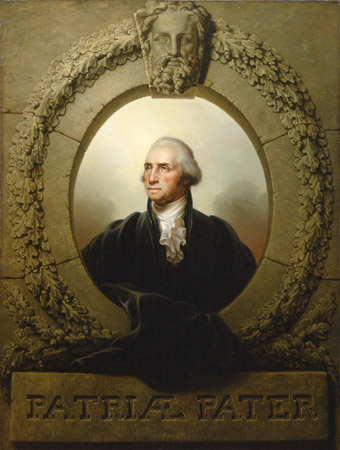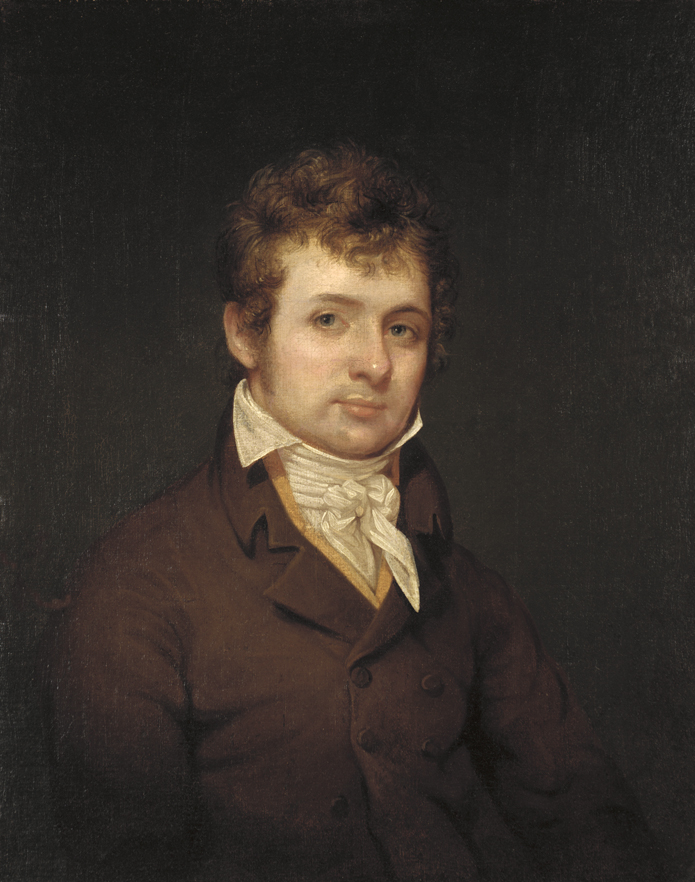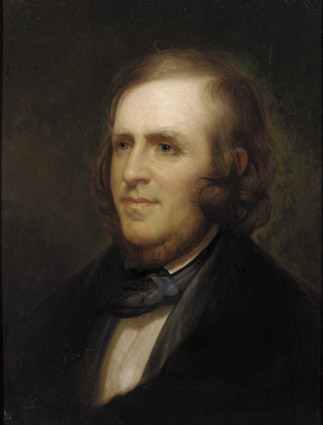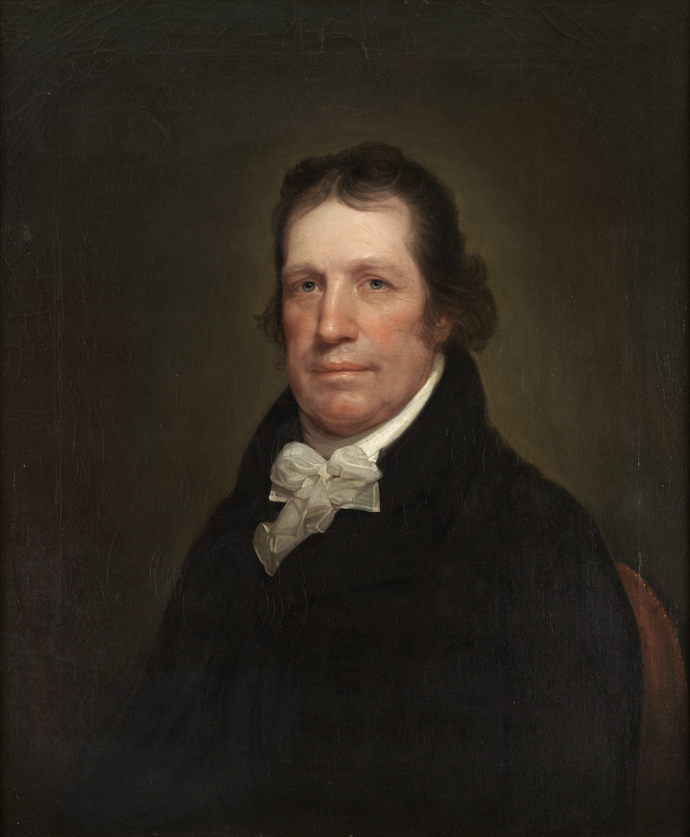
George Washington, Patriae Pater
Rembrandt Peale
From 1823 until his death, Rembrandt Peale painted no fewer than seventy-nine idealized depictions of George Washington. Although Washington had sat for Rembrandt's father, Charles Willson Peale on numerous occasions, the younger Peale painted the first president from life only once, in 1795 when the precocious artist was seventeen. That one sitting, however, allowed Peale to develop something of a cottage industry of Washington portraits, and his replicas of the original for wealthy patrons and government buildings supplied a steady income.
This 'porthole' style portrait was devised twenty-four years after Washington's death. Peale surrounded the portrait with an illusionary stone arch with allegory, such as an oak leaf border symbolizing faith, virtue, and endurance. Above the arch, the keystone mask of Jupiter, the Roman king of the gods, refers not only to Washington's leadership but also to the classical ideals on which the nation was founded. Washington's sartorial black cloak, not to mention the title of the painting (Latin for "father of his country"), further emphasizes this aspiration to classical models. Like his father, Rembrandt studied with Benjamin West in London but was more influenced by French Neoclassical painting. His skill in emulating this sophisticated style made him the most successful of the younger generation of Peale artists.
Artist
Date of Birth
(1778-1860)
Date
ca. 1824
Medium
Oil on canvas
Dimensions
72 1/4 x 54 1/4 in. (183.5 x 137.8 cm.)
Accession #
1912.14.4
Credit Line
Bequest of Mrs. Sarah Harrison (The Joseph Harrison, Jr. Collection)
Copyright
No known copyright restrictions
Category
Subject
Collection
We're so excited you're planning to visit PAFA!
Make time for art — visit us Thursday to Sunday.
Before reserving your tickets, please review helpful information about museum hours, accessibility, building access, and special admission programs.
If you have any questions, feel free to reach out to us at visitorservices@pafa.org — we’d love to help!



